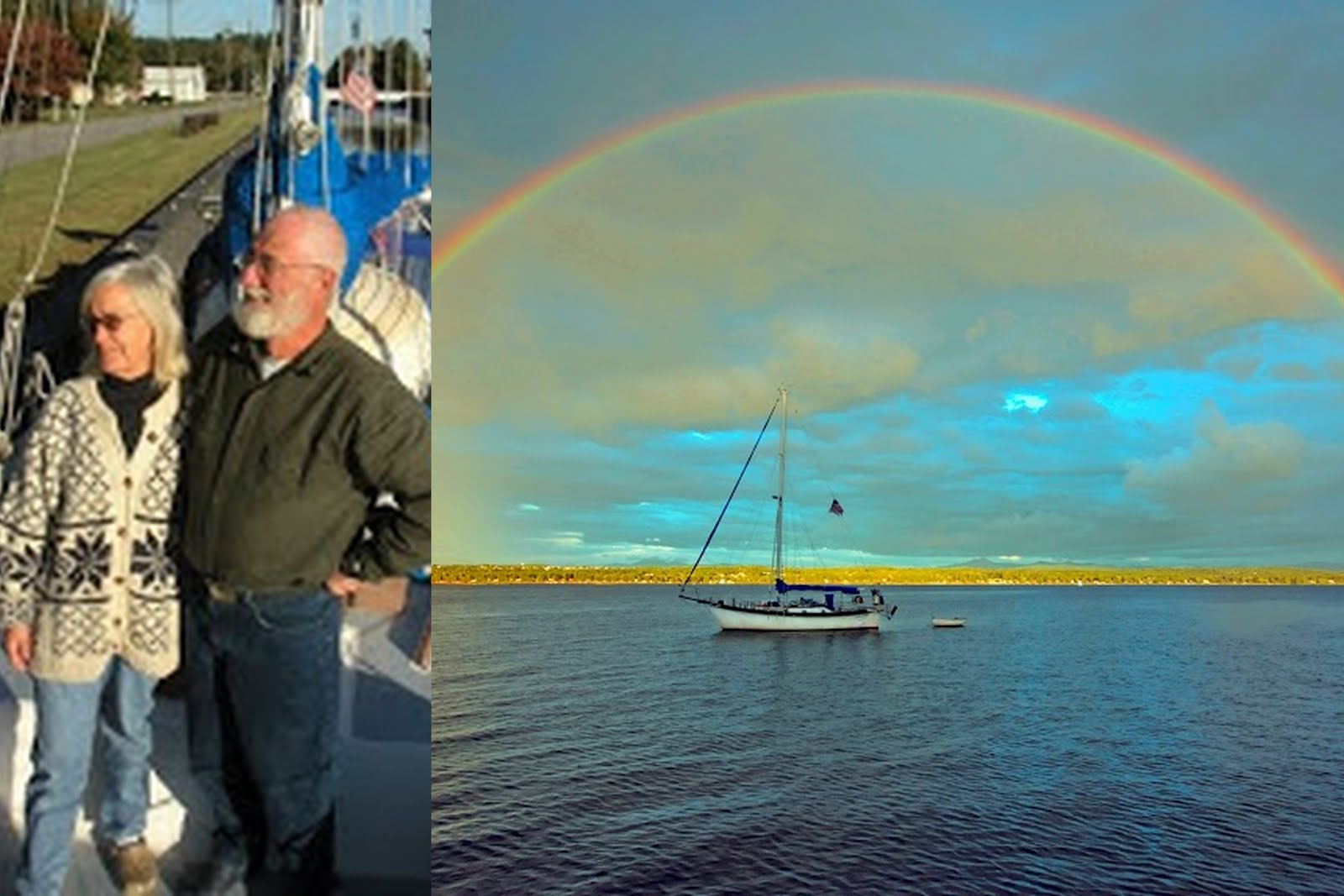44 25.443 N 073 15.028 W
We anchored here in Shelburne Bay for a couple of days hiding out from thunderstorms. This is the location where our famous rainbow picture was taken.
Well, last night the front passed around 10 PM. With it came some strong winds. I estimate 65-70 mph. To our great surprise, Bessie, our 80 pound Luke anchor broke loose and set us adrift. Tarwathie turned beam to the wind and a big gust heeled us over more than 45 degrees.
I scrambled out in my underwear, started the engine and used it to relieve tension on the anchor and to keep the bow into the wind. The rain was intense and I was plenty cold out there.
Like most thunderstorms, the strong winds didn't last long; perhaps 5 minutes. But even then Bessie continued bouncing across the bottom. We dragged more than 300 feet.
Libby and I both put on full foul weather gear (I appreciated the warmth) and set out to haul Bessie up to re-anchor. 30 minutes later we were anchored again, this time in shallower water.
My confidence in Bessie is rattled. It's possible that we dropped her on a bare rock shelf. I wonder if we had one of those fish-finder type of depth sounders, could we see the difference between a bare rock bottom and a muddy bottom?
 |
| This is not what it looked like last night. |





Last night wasn't an ordinary night of wind. We're on Long Island Sound and we experienced quite the gusts, they were loud like freight trains and the boat moved a fair bit. I would not have wanted to be anchored out in that wind.
ReplyDeleteThe Attainable Adventure site says the following: "We would make the spare a second Rocna or SPADE since they will have much better holding in mud or sand than the Luke due to their much larger fluke area for a given weight." Robin's "fisherman", which, I believe, is the same as a Luke, is planted in our front lawn as an ornament. Were I traveling to locales with deep seaweed, I'd have I on board. But for average east coast anchoring that we've encountered, the CQR or plow anchor works find almost always and we've dragged only when the anchor was fouled on the bottom.
Delete